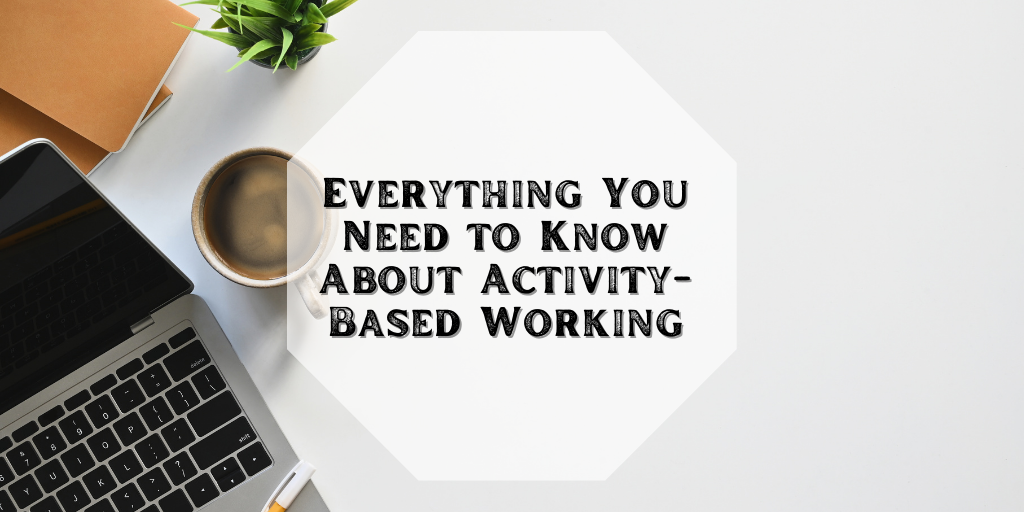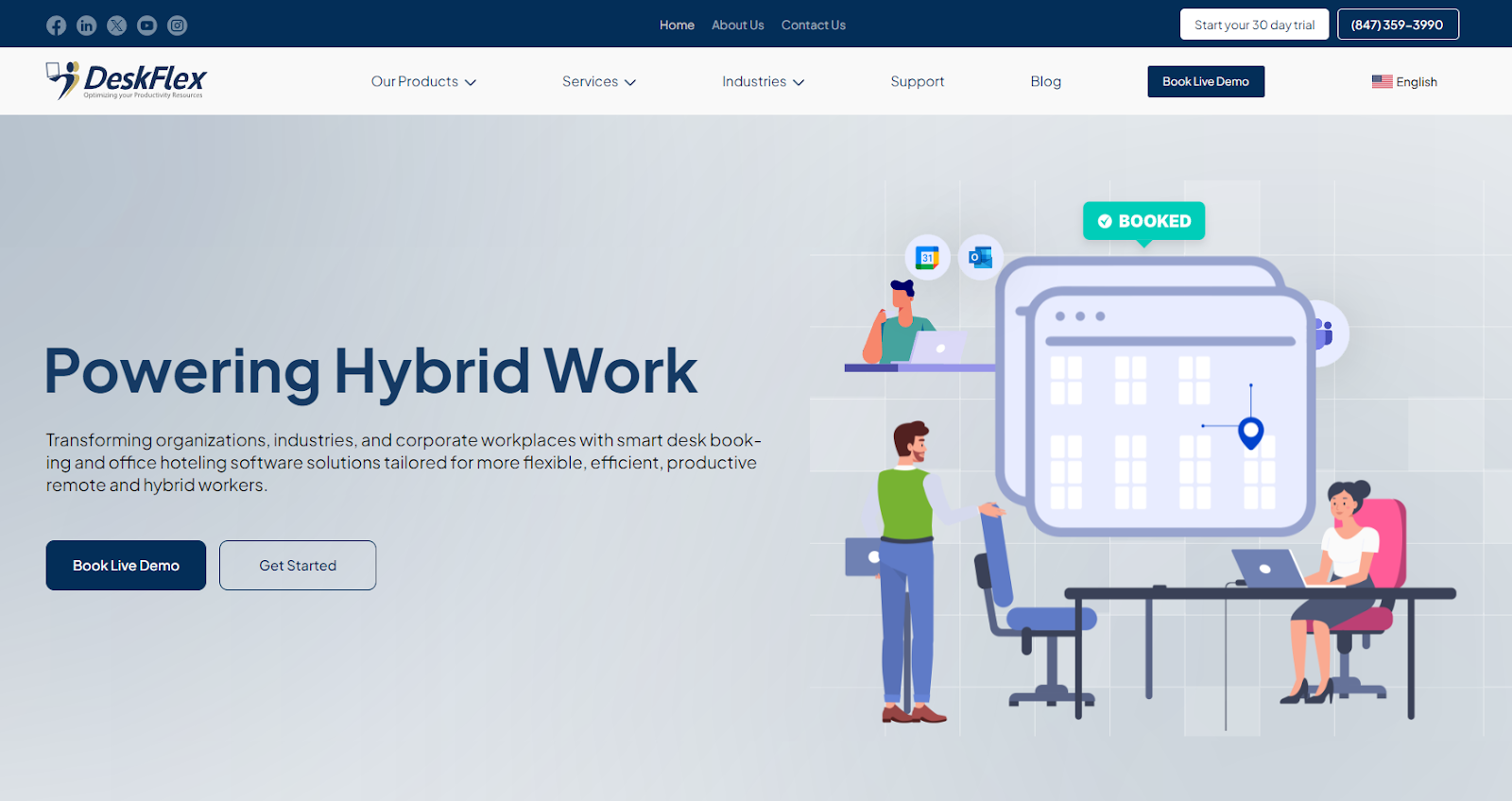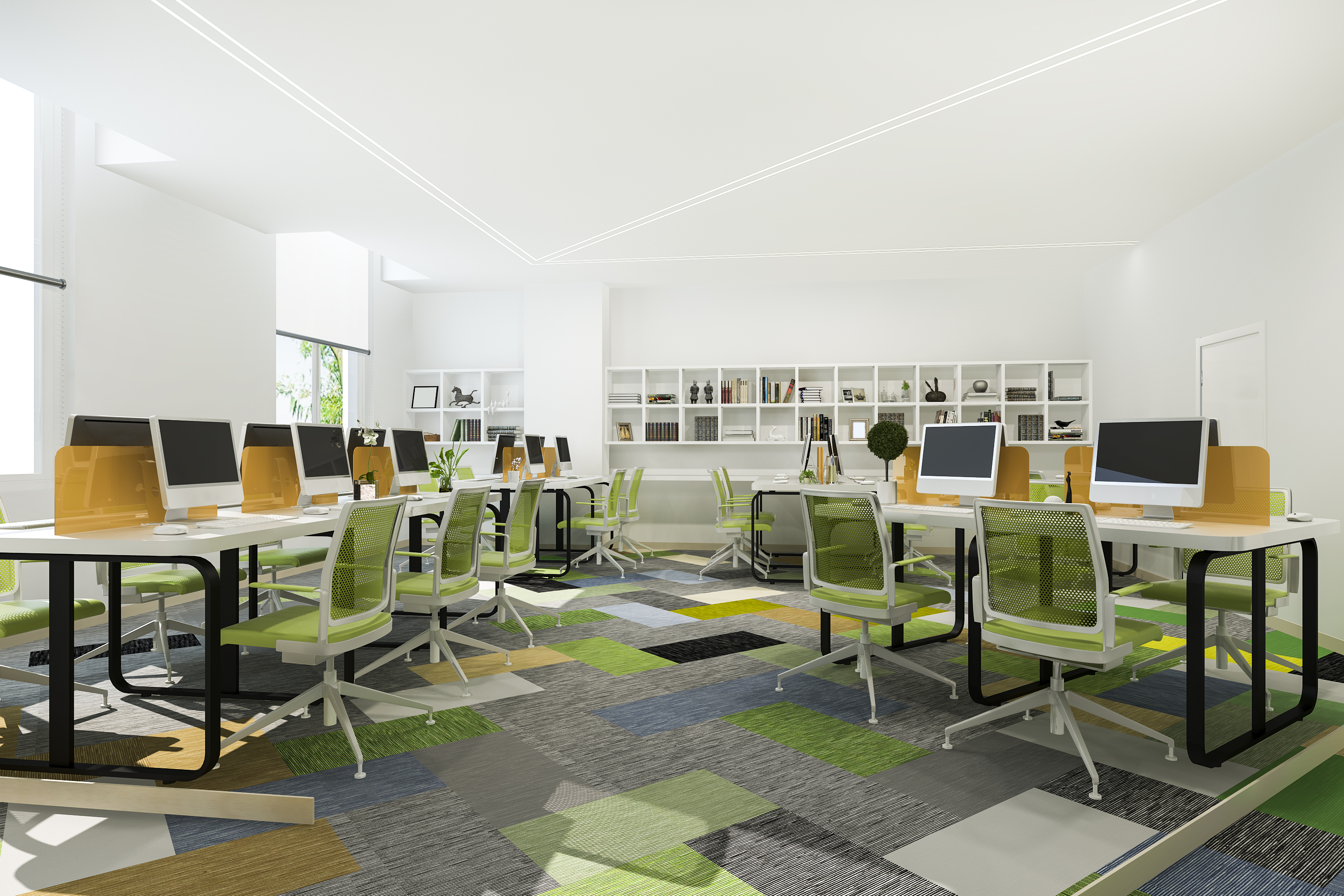Blog

Everything You Need to Know About Activity-Based Working
As employees return to the office, they expect a different experience than before the pandemic. Meanwhile, other employees still see remote work as more beneficial.
This shift has led employers to redesign their office space with a focus on improving the work environment, incorporating flexible working, and addressing various working styles and preferences to optimize employee productivity.
In today’s article, we’ll teach you the importance of an activity-based working model. We’ll also walk you through the steps you can take to guarantee employee productivity in collaborative spaces.
What’s the Biggest Problem with the Open Office Layout?
The open office layout was once seen as the solution to cubicle farms, promising more interaction and collaboration. However, this has not been the case in practice.
Studies show that open-office designs have led to lower interaction, higher turnover rates, and reduced employee satisfaction.
Here are some key challenges with open offices:
1. Lack of Privacy
Employees often feel exposed without private spaces, which impacts their performance, especially in industries that handle confidential client information.
The inability to retreat to a quiet space or an enclosed space can also lead to increased stress and discomfort.
The lack of dedicated spaces for private tasks within an office environment may disrupt concentration and affect productivity, especially when employees need multiple settings to accommodate different tasks.
2. Distractions and Over-stimulation
The lack of barriers makes it difficult for employees to focus, especially those who need silence to complete tasks. Visual and auditory distractions can overwhelm individuals, leading to frequent breaks in concentration and lowering overall productivity.
The lack of well-defined quiet rooms can significantly hinder the effectiveness of working, where employees rely on various activity settings-based environments to complete different tasks.
Offering specific work settings like phone booths or project rooms can help mitigate distractions.
3. Noise
Everyday office functions become a struggle with excessive noise pollution, which hampers collaboration, phone calls, and video conferencing tools.
Prolonged exposure to high noise levels can also contribute to fatigue and irritability, further decreasing the efficiency of the office space.
4. Health Risks
In the post-pandemic landscape, open offices pose a higher risk of spreading germs, as there are no barriers to limit exposure. Employees in close proximity are more susceptible to illnesses, leading to higher absenteeism rates and greater concern for personal health.
Incorporating quiet rooms can provide safe areas for office workers to work without fear of contamination.
This approach to workplace design can also align with flexible and agile working practices, offering employees the option to choose different spaces for personal well-being and safety.
What is Activity-Based Working?
Activity-based working (ABW) addresses many of the issues with open office layouts. It is designed around creating a variety of work settings that allow employees to choose their workspace based on the task at hand.
Instead of fixed desks, employees move between different spaces within the office, including quiet rooms, collaboration zones, and enclosed spaces.
ABW is not a static environment. It allows employees to select where and how they work, providing a dynamic approach to the traditional office setup.
ABW offers several benefits, such as:
Reduced Real Estate Costs
Activity-based working optimizes the use of office space by eliminating underutilized areas, allowing businesses to reduce their physical footprint without sacrificing functionality.
By embracing flexible workspaces and integrating multiple activity settings, companies can downsize office locations, saving on rent, utilities, and maintenance costs.
This workplace strategy enables businesses to streamline office layouts, providing dedicated spaces for specific tasks, such as meeting rooms, project rooms, and quiet spaces.
Livelier Office Environments
Employees can move between open and enclosed spaces, which encourages more interaction and socialization, ultimately fostering a more dynamic work environment.
This flexibility allows for impromptu collaborations in collaborative spaces and spontaneous knowledge exchange, boosting both creativity and productivity.
The variety of work settings, from quiet spaces for focused work to collaboration zones, enhances the overall office environment and increases employee satisfaction.
Higher Recruitment and Retention
Activity-based working provides the flexibility employees want, leading to higher engagement and morale, which is essential in attracting top talent and keeping current employees satisfied.
In today’s competitive job market, offering an adaptable office workspace with multiple settings like shared desk spaces, coffee shop-style lounges, and quiet rooms can be a major differentiator for companies looking to reduce turnover.
This activity-based office concept enables employees to balance their work lives by allowing them to choose their preferred work environment for different tasks.
Better Work Relationships
Employees can build better relationships across teams, as they are no longer confined to the same assigned desk every day, promoting cross-departmental collaboration.
This mobility fosters greater communication, enhanced collaboration, and a sense of community among multiple employees, breaking down silos and improving team productivity.
By enabling employees to work in different spaces, from private spaces to open areas, an activity-based workspace encourages stronger bonds between office workers.
What Makes an Activity-Based Workspace?
While ABW shares similarities with open office designs, it places more emphasis on matching tasks with the environment best suited for them. Here are the key features of a well-designed ABW workspace:
- Effective design: The goal is to create different zones that cater to diverse tasks. For example, open spaces can be used for collaborative projects, while enclosed rooms are ideal for focused work or when conducting meetings.
- Awareness and etiquette: ABW relies on trust and autonomy among employees. Team members should be mindful of others’ needs, keeping phones on silent in quiet areas and cleaning up shared spaces after use, especially in hybrid offices.
- Stimulation: Creating cues in the workplace helps employees navigate the different sections. Whether it’s open spaces or enclosed, these visual prompts make it easier for employees to pick the right area for their tasks and increase productivity by ensuring they are in the most suitable environment for work.
- Technology integration: Technology is vital in an activity-based working environment. Tools like desk booking software, room reservation systems, and video conferencing tools are essential for facilitating smooth transitions between different workplace environments. This ensures that spaces are properly utilized and that employees have access to the resources they need when they need them.
3 Examples of Activity-Based Workspaces in a Different Office Space
There are plenty of design ideas and examples that provide employees with choices to match their needs. On top of the standard workstations and conference rooms, it’s possible to add the following:
- Huddle rooms: Employees sometimes need to hold small meetings, whether impromptu or scheduled. Huddle rooms meant for one person or a small group can come equipped with audio, video, and even display software.
- Lounge areas: Lounge areas can add a certain ambiance similar to local coffee shops. They serve as great places for quick huddles, ad-hoc meetings, or even focus time for small teams.
- Libraries: Libraries are a more open alternative to one-person sections meant for calls and virtual meetings. They can be a great place to escape noise while still being surrounded by co-workers or like-minded individuals.
- Phone booth: Employees sometimes need to take phone and video calls privately or quietly. “Phone booth” sections serve as specific sections for these reasons as well as for digital meetings.
Implementing Activity-Based Working in Collaborative Spaces
Transitioning to ABW requires a workplace strategy that includes careful planning and change management. Here are steps to properly implement ABW:
- Conduct surveys or interviews to understand employees’ work patterns and preferences.
- Create a variety of spaces, including conference rooms, shared desk spaces, and open areas to cater to different tasks.
- Help employees adapt to the new work environment by offering training on how to use the new spaces and technology.
- Invest in desk booking software, meeting room systems, and collaboration tools to support the transition.
Overcoming Challenges of ABW For Employee Satisfaction
While ABW has numerous benefits, it’s essential to address potential challenges. Employees may resist change, especially if they are accustomed to traditional workspaces with assigned desks. Clear communication about the benefits of ABW and a staged rollout can help ease the transition.
Another challenge is balancing open spaces with private areas. Too much openness can lead to distractions, while too many enclosed areas can hinder collaboration.
Workplace design, when properly implemented, must strike the right balance to support all types of tasks.
How DeskFlex Can Power Your Hybrid Work Model
DeskFlex is the perfect solution for making your digital workplace run smoothly, especially if your team is navigating a hybrid or flexible work environment. Let’s break down how DeskFlex can help:
- Simple desk booking: DeskFlex makes it easy for employees to reserve a desk or workstation when they need it. No more scrambling to find a spot in the office. Employees can check availability and book a desk ahead of time, making sure they have a place to work when they come in.
- Room and resource scheduling: Need a meeting room or special equipment? DeskFlex has you covered. It lets employees book conference rooms or other office resources just as easily as desks. This keeps everything organized and prevents double booking or fighting over spaces.
- Hybrid work management: For businesses juggling both in-office and remote work, DeskFlex makes managing it all a breeze. It helps you balance office attendance, track who’s coming in, and even manage hot-desking policies. You’ll know exactly how your office space is being used and can adjust it based on real-time data.
- Visitor management: Control who can come in and out of your workplace and determine valid visitors, such as delivery people, renters, customers, and job applicants.
Ready to see how DeskFlex can support hybrid work? Book a live demo today!
FAQs About Activity-Based Working
What is an example of activity based working?
An example of activity-based working can be seen at Microsoft Netherlands, where they have implemented a blend of collaborative spaces and quiet zones.
This allows employees to move between different settings depending on the task at hand, whether they need to focus individually or collaborate with a team.
The flexibility of this office space leads to increased productivity by providing the right environment for different work styles and tasks.
What is the activity based working theory?
The activity-based working theory is based on the idea that employees are more productive and satisfied when they have the flexibility to choose their work environment based on the task they are performing.
It proposes that office spaces should include a variety of activity settings such as open and enclosed spaces, quiet rooms, collaborative spaces, and meeting rooms to support different work activities. This approach helps optimize the use of space, promote collaboration, and increase productivity.
What is an activity based work model?
The activity-based work model is a workplace strategy that replaces the traditional assigned desk setup with a variety of workspaces designed for different tasks.
Instead of having a permanently assigned desk, employees move between multiple settings such as open collaboration zones, quiet spaces for focused work, meeting rooms, and private spaces for calls or project rooms.
This model offers flexibility, allowing employees to choose the best environment for their current task, which improves both employee satisfaction and overall office efficiency.
What are the principles of activity-based work?
The key principles of activity-based work include:
- Flexibility: Employees have the freedom to choose their work setting based on the task at hand, moving between open spaces, closed spaces, and collaboration areas.
- Variety of spaces: The office is designed with multiple settings, such as quiet areas, shared desks, and meeting rooms, to accommodate different work activities.
- Technology support: Tools like desk booking software and video conferencing software are essential for managing space usage and facilitating hybrid offices.
- Employee autonomy: Employees are empowered to choose the most suitable environment for their work, leading to increased productivity and engagement.
- Efficient use of space: The model helps reduce real estate costs by optimizing space usage and eliminating underutilized areas.

















































